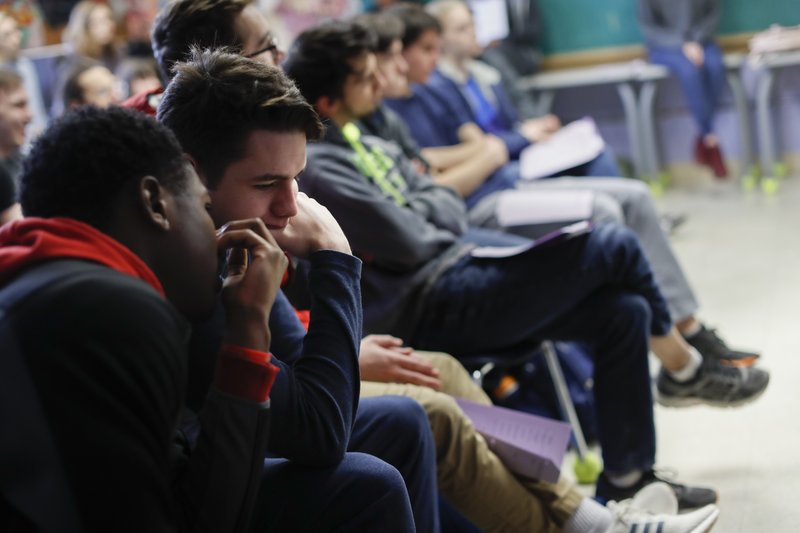WORTHINGTON, Ohio -- A videotaped encounter at the Lincoln Memorial earlier this month left many wondering about the state of reasoned political discourse in the country, or if it exists at all in a hyperpartisan era of red "Make America Great Again" hats versus pink women's march caps.
In a video from Jan. 18, a group of boys from Kentucky's Covington Catholic High School, an American Indian activist and a cluster of Black Hebrew Israelites faced off in an uncomfortable confrontation that spread online and in the media. It has prompted national debate about civility in politics, the seeming lack of tolerance for those of differing political beliefs and how both are influencing the nation's youth.
That debate sounded all too familiar to Ohio social studies teacher Judy Galasso, who has taught a class on political radicalism at Thomas Worthington High School for three decades now.
"If someone's yelling things at you, if you're presented with groups that you disagree with, my hope is that we train our kids well enough that they're not going to react," Galasso said.
Galasso and co-teacher Jonathan Duffy invite members of America's most extreme political groups -- including the National Socialist Movement, the Weather Underground and the Revolutionary Communists -- into their classroom each semester. They teach students to engage respectfully with those of differing beliefs and to ask questions.
The Covington Catholic incident has proved divisive. Parents, alumni and others have rallied to the white teenagers' defense and, in a tweet, President Donald Trump called the students "symbols of Fake News and how evil it can be." Others largely supported the Indian activist, describing him as a victim of racism and white entitlement.
U.S. Political Thought and Radicalism, "poli-rad" for short, has been steadily offered as a social studies credit by the suburban Columbus district since the 1970s. Over the decades, its unconventional speaker series has generated excitement, sparked protests and left classrooms at turns emboldened, shaken or inspired.
"In 2019, no school board in America would approve a class like this, but in Worthington, there's no way you could get rid of it," Galasso said.
Speakers over the years have included former revolutionary Bill Ayers of the Weather Underground, Harry Hughes of the National Socialist Movement, Ramona Africa from the black liberation group Move, white supremacist Richard Spencer and Turner Diaries author William Pierce.
Retired teacher Tom Molnar said he created the course in 1975 with input from students. He had been given the course topic, but no guidance. When students said they wanted to learn about radical groups operating in America at the time, he had to tell them there was no source material to work from. One student suggested inviting the groups in.
"I told him it was completely nuts, but they encouraged me to take that message to the principal, and the principal said, 'It's brilliant,'" he said.
Poli-rad students study each speaker ahead of time, gathering background and preparing questions. Afterward, teachers help them think critically about how factors such as deceptive language or personal charisma were used.
The teachers attribute the course's success to a few key ground rules: Presenters must come from across the political spectrum, they can't be censored, students must remain respectful and instructors can't share their personal political beliefs.
Another key takeaway: Don't rush to judgment.
"One thing we teach kids when speakers come in is to truly listen to what they're saying," Duffy said. "Just because they think they know what this individual believes, you still have to listen and accurately reflect."
In the early 1990s, Ku Klux Klan members arrived to the classroom in full robes and hoods. Their silhouettes could be seen from the main road in front of the high school, spreading community alarm. To ease concerns, teachers agreed to a compromise: They would cease inviting active Klansmen as long as the district placed no further restrictions on their speakers.
Senior Tori Banks, 18, who took the course last semester, said it helped her expand her views and learn tolerance.
"If I weren't in the class and I saw some of these speakers or people of certain stances walking around, I may feel uncomfortable," she said. "But I think the way we do it in poli-rad is a very safe environment."
A Section on 01/28/2019
